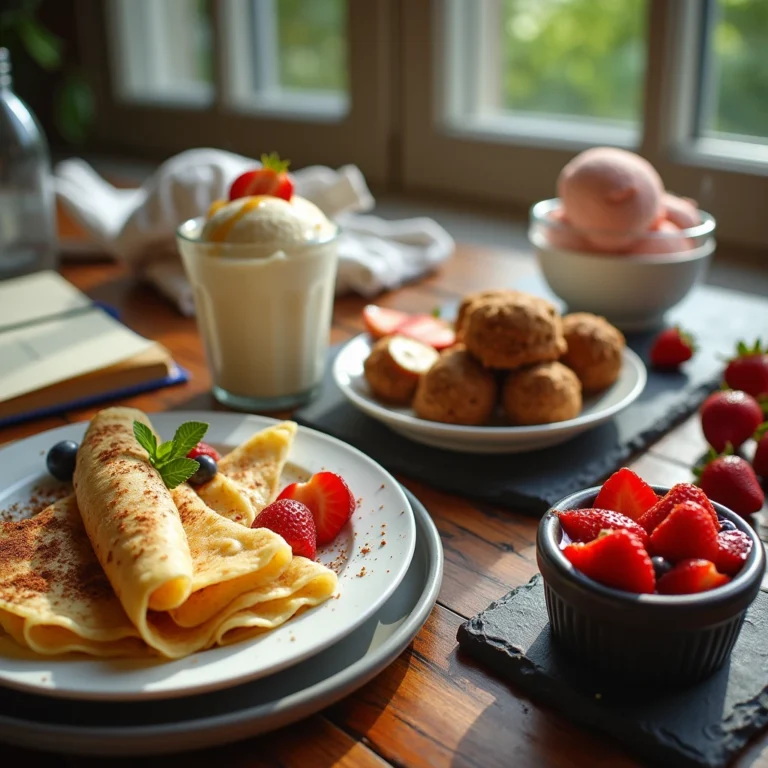Low-Sugar Smoothie Bowl: Delicious Recipes & Expert Tips for Better Health
Imagine starting your day with a vibrant, nutrient-packed breakfast that satisfies your cravings without spiking your blood sugar. Whether you’re managing diabetes, aiming for weight loss, or simply prioritizing wellness, a low-sugar smoothie bowl can be your secret weapon. Bridget, a wellness advocate, shares how swapping high-sugar fruits for fiber-rich alternatives transformed her health and how you can do the same.
Table of Contents
Why Choose a Low-Sugar Smoothie Bowl?
Key benefits backed by science.
- Stabilizes Blood Sugar: Low-sugar fruits like berries and kiwi prevent insulin spikes.
- High in Fiber: Chia seeds and raspberries promote digestion and keep you full longer.
- Nutrient-Dense: Packed with vitamins C, antioxidants, and healthy fats (avocado!) for glowing skin and energy.
The Hidden Dangers of High-Fructose Fruits
- Tropical fruits (pineapple, mango) and dried fruit can overload your liver, increasing fatty liver disease risk.
- Juices lack fiber, causing rapid blood sugar spikes.
How to Build the Perfect Low-Sugar Smoothie Bowl

Step-by-step guide with expert-approved ingredients.
Base Ingredients
- Frozen Berries & Watermelon: 80g each for natural sweetness and antioxidants.
- Chia Pudding: Mix 2 tbsp chia seeds + 120ml coconut milk for fiber and protein.
Toppings for Texture & Flavor
- Fresh berries, pistachios, pumpkin seeds, puffed buckwheat, and rose petals for crunch.
- Avoid: Dried fruit, honey, or sugary granola.
Recipe Pro Tip
Blend frozen fruit with a splash of fiber syrup (not sugar!) for a prebiotic boost.
Low-Sugar vs. High-Sugar Fruits: What to Use
Quick-reference table for smarter choices.
| Low-Sugar Fruits | High-Sugar Fruits to Limit |
|---|---|
| Berries (raspberries, blueberries) | Bananas, mangoes, pineapple |
| Green apples, kiwi | Sweet apples, figs |
| Avocado, stone fruits | Canned or dried fruit |
The Science Behind Low-Sugar Eating
- Excess fructose (even natural) strains the liver, leading to insulin resistance.
- Fiber-rich foods slow sugar absorption, protecting your metabolic health.
Customizing Your Smoothie Bowl for Goals
- Weight Loss: Add protein powder or Greek yogurt for satiety.
- Diabetes Management: Pair with nuts for healthy fats to further stabilize glucose.
- Post-Workout: Top with pumpkin seeds for magnesium and recovery.

Low-Sugar Smoothie Bowl
Ingredients
Base :
- 80g frozen raspberries (2.8 oz)
- 80g frozen watermelon (2.8 oz)
- 1 tbsp fiber syrup (e.g., prebiotic syrup)
Chia Pudding :
- 2 tbsp chia seeds
- 120ml coconut milk (4 oz)
Toppings :
- Fresh raspberries, strawberries, or kiwi slices
- 1 tbsp crushed pistachios
- 1 tbsp pumpkin seeds
- 1 tbsp puffed buckwheat
- Edible rose petals (optional)
Instructions
- Prepare Chia Pudding : Mix chia seeds and coconut milk in a bowl. Let sit for 10–15 minutes to thicken
- Blend Base : Combine frozen raspberries, watermelon, and fiber syrup in a blender. Blend until smooth
- Assemble : Layer blended fruit and chia pudding in a bowl. Top with fresh berries, nuts, seeds, and rose petals
- Serve : Enjoy immediately for optimal texture.
Conclusion
A low-sugar smoothie bowl isn’t just a meal it’s a celebration of flavor and health. By choosing the right ingredients, you nourish your body while keeping cravings at bay. Ready to blend? Snap a photo of your creation and tag #LowSugarBowl for a chance to be featured!
FAQ Section
Q1: Can a low-sugar smoothie bowl aid in weight loss?
Yes! High-fiber, low-sugar fruits keep you fuller longer, reducing overeating.
Q2: Are smoothie bowls safe for diabetics?
Absolutely. Berries and chia seeds have minimal fructose and won’t spike blood sugar.
Q3: How to make a low-sugar smoothie bowl thicker?
Use frozen fruit and chia pudding for a creamy, no-added-sugar texture.
Q4: Can I use frozen veggies in my smoothie bowl?
Yes! Spinach or zucchini add nutrients without altering taste .
Join thousands prioritizing health try this low-sugar smoothie bowl today! Share your recipe twists in the comments below. 🥑🍓







